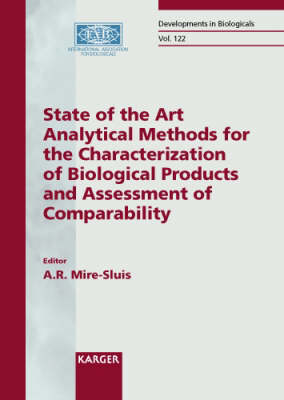Developments in Biologicals
1 primary work
Book 122
With the latest advances in analytical technologies, most biological products can now be extensively characterized in terms of their identity, heterogeneity and impurity profile. The currently available analytical methods (both physicochemical and biological) can characterize the primary, secondary and to some extent, the higher order structure of proteins. The sensitivity and selectivity of these methods allow for the identification and characterization not only of the desired protein component, but also many product-related substances and impurities as well as process-related impurities present in the drug preparations. Using an appropriate selection of analytical tools, it may be possible to demonstrate physicochemical and functional comparability between protein products manufactured before and after a manufacturing change or during product development. However, the extent of demonstrable comparability depends on the tests used, on the nature of the product and on the basic understanding of structure-function relationships. Assessment of immunogenicity is also a critical component of product characterization and is highly dependent on the types of assays used.
